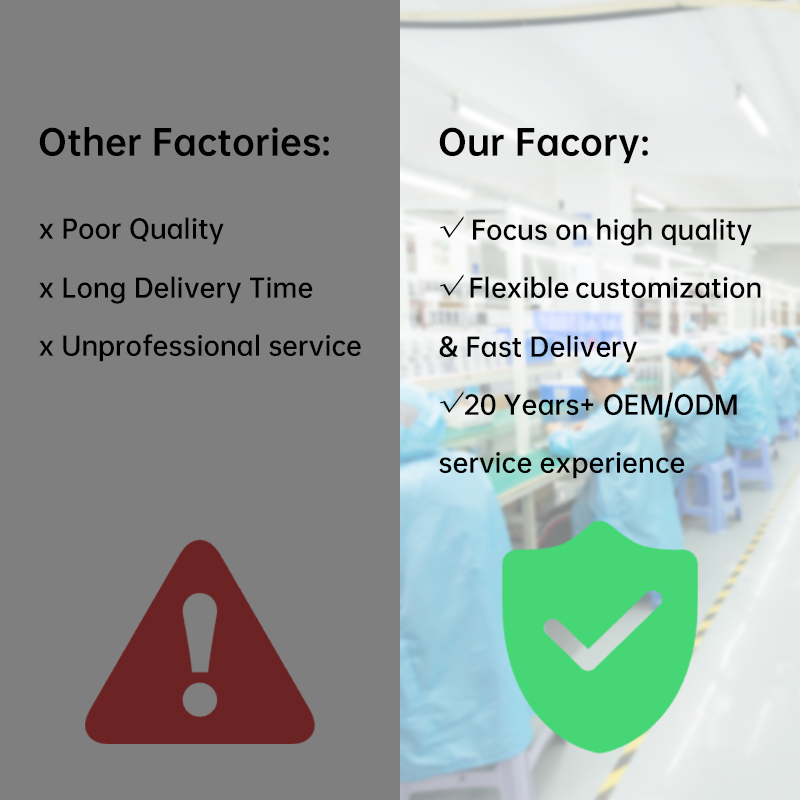In recent years, the electric toothbrush industry has expanded rapidly, particularly in the low-end electric toothbrush segment. However, this growth has brought a new challenge — product homogeneity. Many brands rely on similar designs, battery capacities, vibration frequencies, and even packaging. As a result, consumers find it difficult to distinguish one product from another, leading to declining brand loyalty and shrinking profit margins. This homogeneity problem is not just about aesthetics; it reflects a deeper issue of limited innovation and over-reliance on basic OEM manufacturing models.
The intense competition in the low-end market stems from two key factors.
First, the barriers to entry are relatively low — many factories offer turnkey OEM or ODM services, making it easy for new brands to launch products quickly. Second, aggressive price wars have pushed manufacturers to cut corners, sacrificing differentiation and product quality for short-term market share.
As a result, brands are caught in a race to the bottom — where lower prices become the only selling point. To break this cycle, companies must rethink their OEM relationships and pursue a more strategic approach to product development.
To overcome product homogeneity, brand owners should adopt an OEM differentiation strategy. Instead of treating the manufacturer as a simple supplier, brands can collaborate with the factory to co-develop unique product features, technologies, and designs.
Key elements of a successful OEM differentiation strategy include:
Customized Design – Develop exclusive molds, materials, or ergonomic shapes that align with brand identity.
Technology Integration – Incorporate advanced features such as smart sensors, app connectivity, or adaptive brushing modes.
Quality Control Partnership – Work closely with manufacturers to set higher QC standards that reflect premium brand positioning.
This approach transforms the traditional OEM relationship into a long-term innovation partnership, helping both sides build sustainable competitiveness.
Understanding consumer behavior is critical to standing out in a crowded market. Data-driven insights can reveal what users truly value — whether it’s battery life, brushing comfort, or travel convenience.
By sharing this information with their OEM partners, brands can co-develop products that directly address consumer pain points. For example, a factory with R&D capabilities can help design a toothbrush optimized for sensitive gums or equipped with AI-powered brushing feedback.
This synergy between data and design ensures that new models are not just “different,” but also more meaningful to end users.
Even with superior products, differentiation won’t succeed without a strong brand story. Many low-end electric toothbrush brands fail to articulate their unique value. Creating a compelling narrative around technology, sustainability, or lifestyle can elevate brand perception.
For instance, positioning the brand as “affordable innovation for healthy smiles” or “eco-friendly oral care for modern users” can resonate deeply with consumers. When combined with a distinctive OEM differentiation strategy, such branding amplifies visibility and loyalty in a saturated market.
The future of the low-end electric toothbrush market lies in innovation-driven differentiation. Brands that move beyond simple OEM replication and invest in co-creation, R&D, and branding will dominate the next growth cycle.
In short, solving product homogeneity and surviving intense competition requires more than just lowering costs. It demands a shift in mindset — from being a price competitor to becoming a value innovator. By partnering strategically with capable manufacturers and implementing an effective OEM differentiation strategy, brands can truly redefine their place in the global oral care market.
The low-end electric toothbrush market is evolving rapidly, and only those brands that embrace differentiation, innovation, and strategic OEM collaboration will thrive. Product homogeneity is not an inevitable fate — it’s a challenge waiting to be transformed into opportunity.
.jpg)
Why is OEM Water Flosser Design Critical for Partnering with a Water Flosser Filter Supplier?

What Impact Will the Differences in Materials and Workmanship of Electric Toothbrushes Have on Product Performance?
.jpg)
bulk electric toothbrushes Leeds
.jpg)
Sonic toothbrush factory
.jpg)
electric toothbrush manufacturer Manchester
Kids Smart Sonic Toothbrush OEM | Professional Manufacturer for Global Brands
.jpg)
Wholesale electric toothbrushes England
.jpg)
Chinese factory Electric toothbrush OEM services UK
.jpg)
how to find an electric toothbrush supplier in Leicester
.jpg)
Private label sonic toothbrush with logo
Antibacterial Electric Toothbrush OEM Manufacturer
.jpg)
wholesale electric toothbrushes Glasgow
.jpg)
How Does a Dental Clinic Water Flosser Require a Reliable Water Flosser Pump Supplier?
.jpg)
oral care supplier Edinburgh
.jpg)
Chinese factory OEM electric toothbrush UK
electric toothbrush distributor Southampton

Customization Teeth Whitening Gel
.jpg)
Florida Electric Toothbrush – Powsmart PTR-C8

electric toothbrush heads Charcoal Infuse-Round

electric toothbrush heads Regular Clean

Electric toothbrush heads Charcoal Infused-Diamond

electric toothbrush heads Ultra Soft

Private Label Whitening Gel

electric toothbrush heads Deep Clean
whstapp
whstapp
National Toll-Free Service Hotline
+86 755 86238638